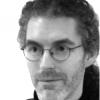You might recall a recent article implicating impaired ketogenesis of supporting Leydig cells in the age-related functional decline of the testes in mice. Today's open access preprint presents a different perspective on this functional decline, in flies as opposed to a mammalian species. Rather than aspects of cell metabolism, the authors focus on genes that regulate germline stem cell quality in the testes. These cells influence tissue function in more ways than simply producing daughter cells; their signaling is also important.
Stem cell populations lose function with age in a number of broadly similar ways, even if each population is meaningfully different from one another in specific mechanisms. Stem cells can become negatively influenced by the signaling environment, as age-related damage accumulates in the supporting cells of their stem cell niche. Stem cells can become less active while still retaining their function in principle. The population size can decline. Mutational damage can create stem cells that generate damaged daughter cells. And so forth. In this case, changes in gene expression that take place with age, possibly caused by changes in supporting cells, can produce malfunctioning stem cells that replicate more readily to outcompete their more functional peers. Restoring expression of target genes can reverse this issue, and restore lost function to the testes.
Adult organs rely on tissue stem cells for lifelong maintenance. These stem cells typically reside in specialized microenvironments termed niches, which provide short-range signals essential for preserving stemness. However, as organisms age, niche functionality declines, resulting changes in secretion of soluble factors and in biophysical properties of the microenvironment. The age-dependent decline in niche function reduces both stem cell activity and overall stem cell numbers, leading to age-related organ dysfunction. In humans, the decline in fertility in older men is due in part to the dysfunction of Sertoli and Leydig cells - key components of the spermatogonial stem cell (SSC) niche.
Competition among adult stem cells often occurs with aging and results from extrinsic and intrinsic events. The age-altered microenvironment can exert different selective forces on resident stem cells, and stem cells can sustain age-dependent mutations that could impart a selection advantage. Stem cell competition is implicated in a range of human pathologies. In the male germline, paternal age effect (PAE) disorders arise from de novo mutations in aging SSCs that confer a growth or competitive advantage, leading to clonal expansion and an increased proportion of mutant cells in the seminiferous tubules. These "selfish" mutations pose serious risks to offspring. Despite their clinical importance, in vivo models for PAE are limited, and the phenomenon of stem cell competition in the germline remains underexplored.
Using the Drosophila testis, we identify a regulatory axis in which age-related decline of niche signals (bone morphogenetic proteins, BMPs) lead to upregulation of the co-repressor Hairless, which downregulates the RNA-binding protein Imp in aged germline stem cells (GSCs). Reduced Imp causes loss of Chinmo, a key factor in GSC aging and competition. Reduced Chinmo causes ectopic Perlecan secretion which accumulates in the testis lumen and causes GSC loss. Aging of the testis is reversed by increasing BMPs in the niche, or by overexpressing Imp or depleting Hairless in GSCs. Furthermore, GSC clones with reduced Imp or increased Hairless are more competitive, expelling wild-type neighbors and monopolizing the niche. Thus, BMPs regulate testicular niche aging through the Hairless-Imp-Chinmo axis and "winning" GSCs usurp these aging mechanisms.
View the full article at FightAging








































